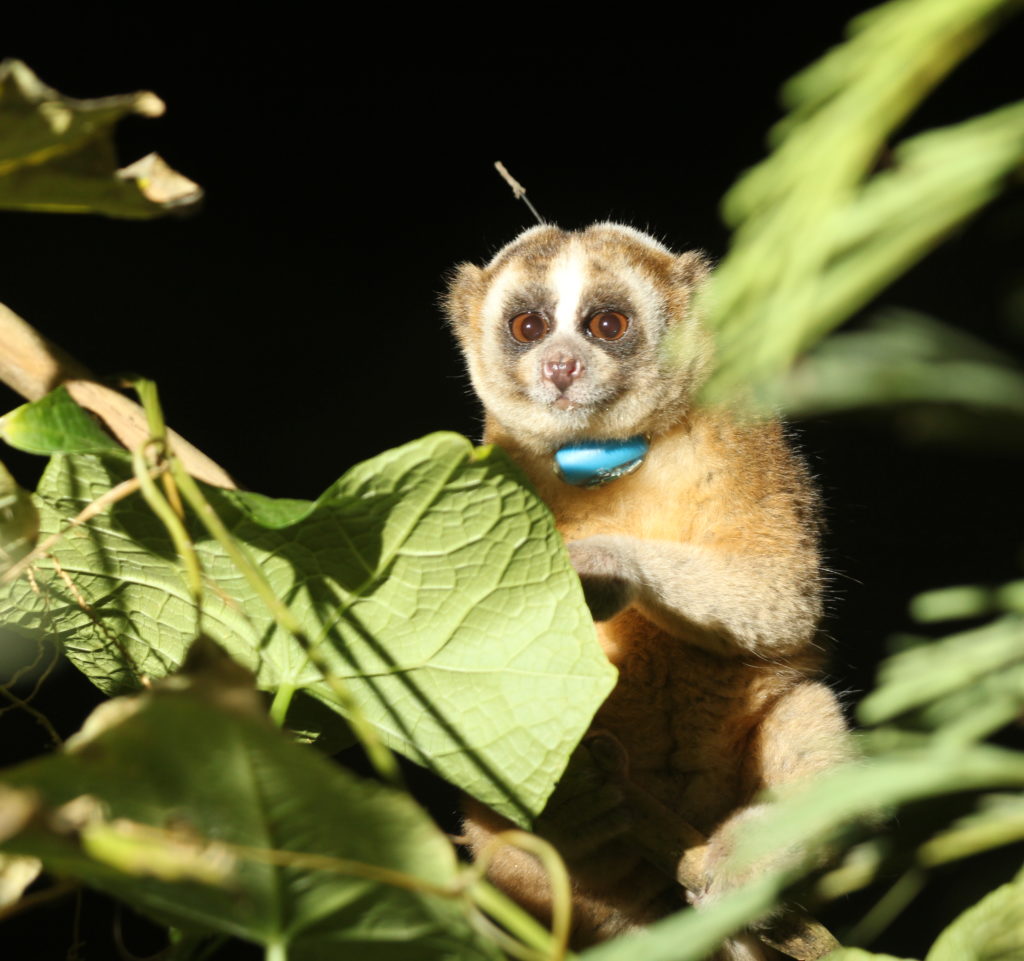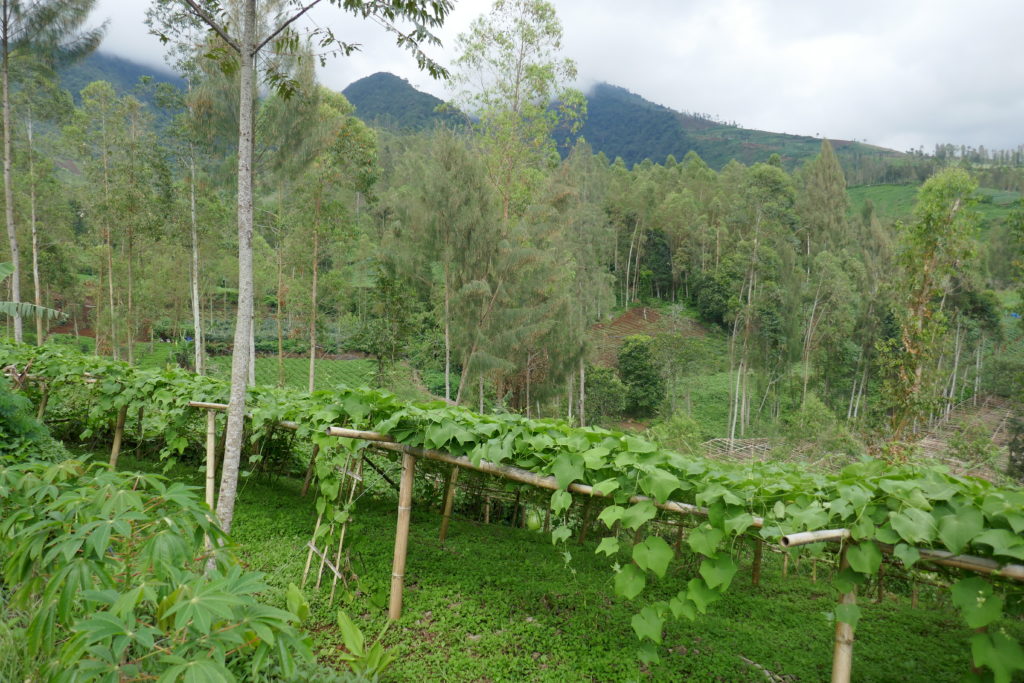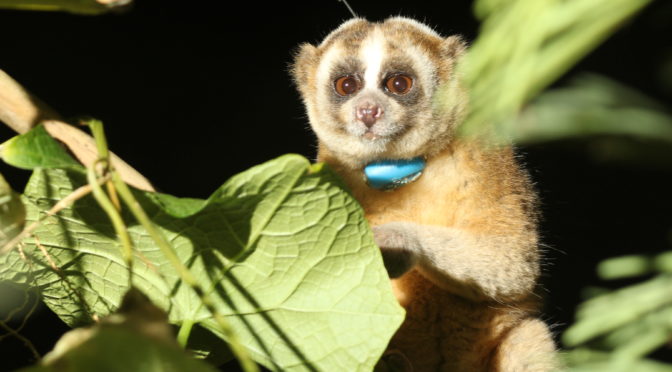My time at LFP is ending soon because I have finished collecting data for my undergraduate studies. Here are some things I have done and learned along the way about slow lorises and the habitat that they live in.
Sleep Sites
Every week, we check the lorises during the daytime to see where they are sleeping. This helps us make sure everyone is doing okay, and also gives us data about where they like to sleep. One time, one of the lorises was found in a bamboo patch far away from his usual area. Next time we checked, though, he had back to his usual area. Also, there was one loris whose collar had no signal. Dendi, the lead trackers, said to not worry because sometimes the collars get weak after facing a couple days of heavy rain. Doing sleep site is also important because we are able to check on the status of all the radio collars.

Talking to Farmers
This month was also my final month doing research with LFP at Cipaganti. I studied how crops are affecting slow loris behaviour and home ranges. I met many farmers and I saw some patterns with how they cultivate their croplands. Most of chayote farmers are not using any kind of pesticide or insecticide, in fact there is just one farmer that uses herbicide for his chayote to prevent chayote decaying. The other commodity farmers are using pesticide and herbicide to cultivate their crops. Commodity like carrot, cabbage, tomato, chili, potatoes are using pesticide and herbicide with a large amount to maximize their profit.

My Last Time
This month I am finishing my time volunteering and researching for my undergraduate thesis. I am really thankful to join this big family of loris, and I hope I can come back again someday.

